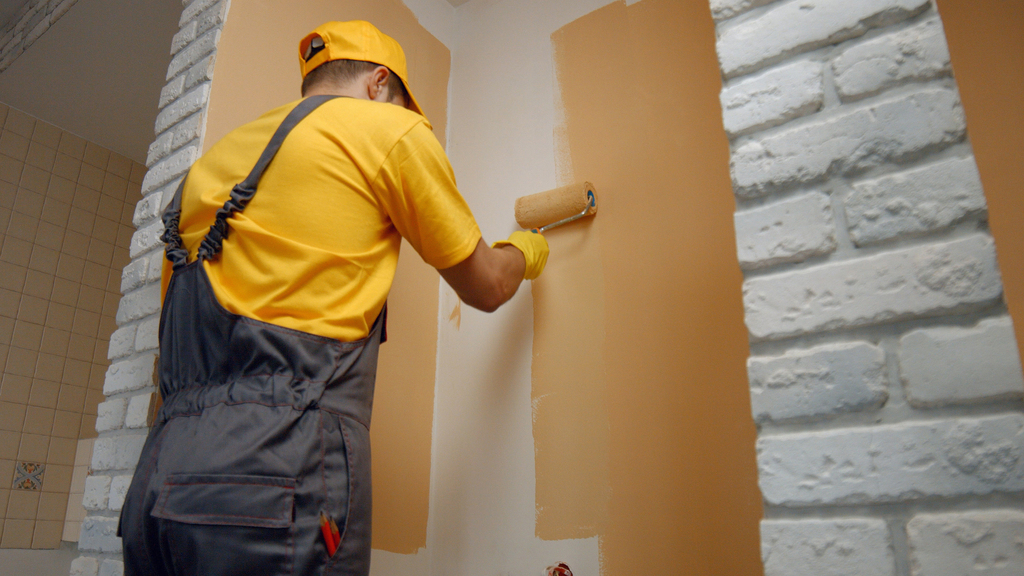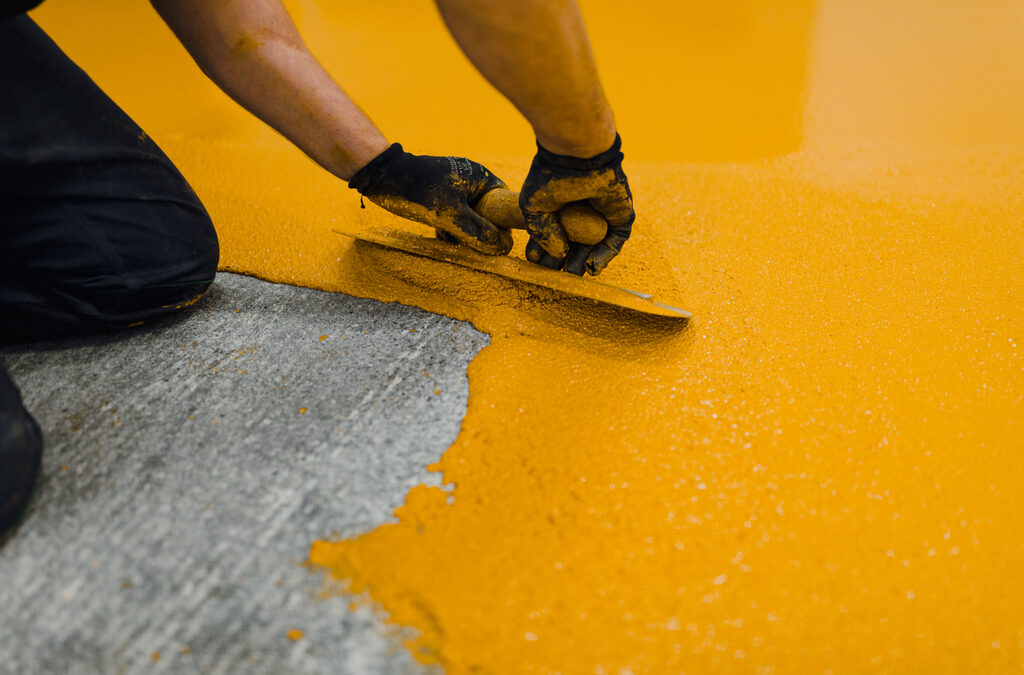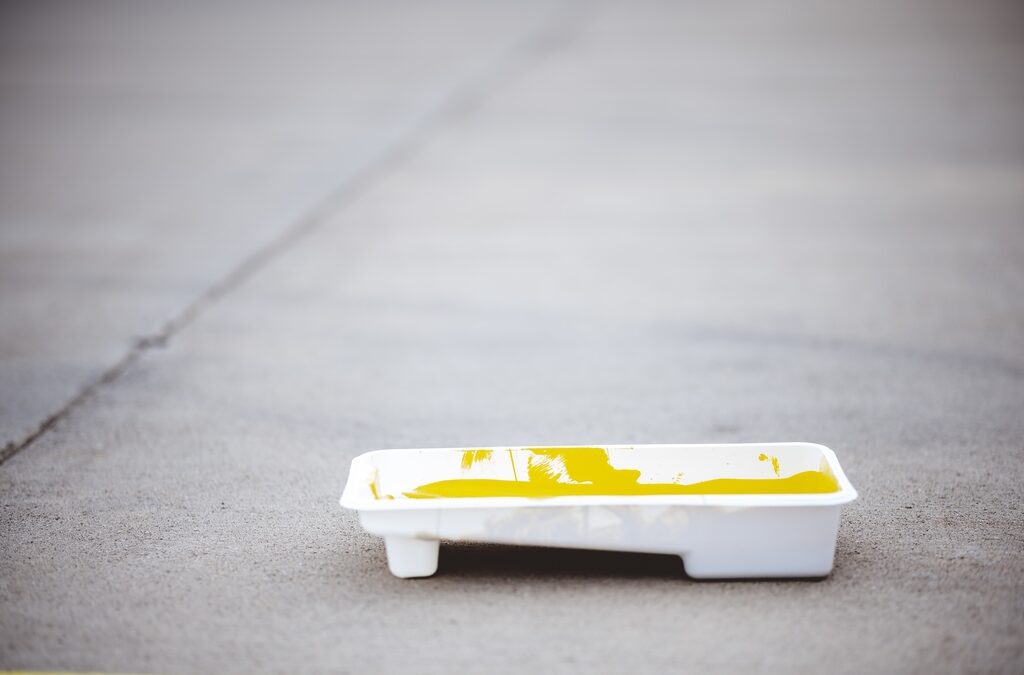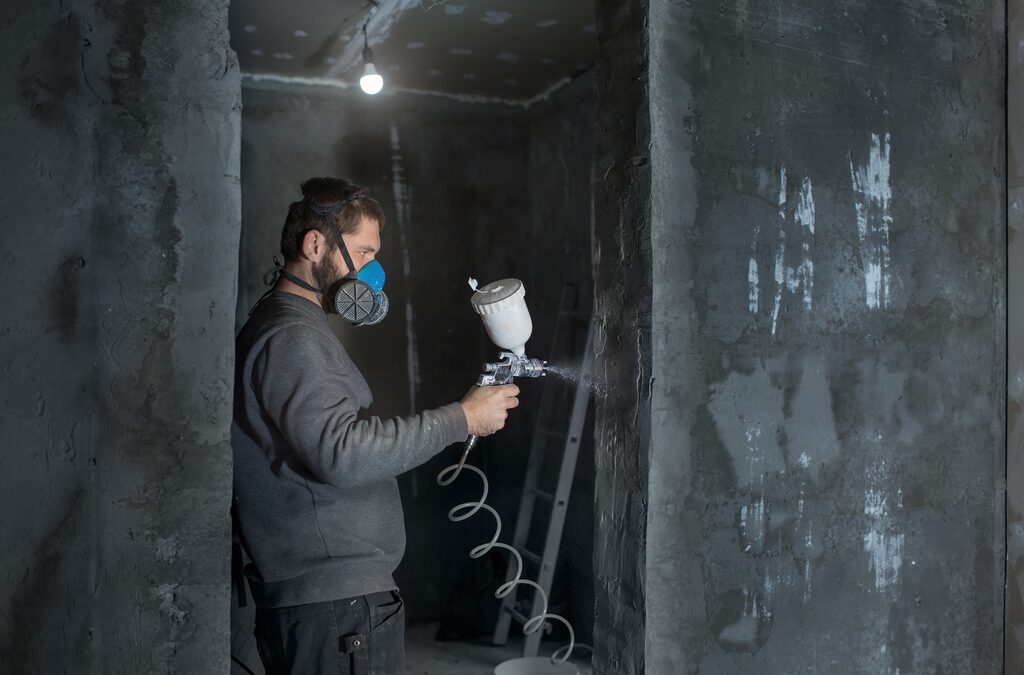What Is Waterproof Paint?
Waterproof paint is a specially formulated coating designed to resist water and moisture infiltration. Unlike regular paint, which may absorb moisture over time, waterproof paint creates a protective barrier on surfaces. This makes it ideal for areas prone to dampness or direct water exposure, helping to prevent issues like peeling, mold growth, and structural damage. Commonly used in both residential and commercial spaces, waterproof paint is a practical solution for safeguarding walls, floors, and outdoor surfaces from moisture damage.
How Does Waterproof Paint Work?
Waterproof paint is made from a unique blend of resins, polymers, and hydrophobic (water-repellent) agents. These ingredients combine to form a smooth, impermeable layer when the paint dries, effectively sealing the surface. As water encounters the paint, it beads up and rolls off rather than seeping in. This film not only protects against water but also prevents the growth of mold and mildew, which can thrive in damp environments.
The efficiency of waterproof paint depends on its application. For optimal performance, it must be applied to clean, dry, and damage-free surfaces. In cases of cracks or holes, these need to be repaired first to ensure a continuous, moisture-resistant barrier.

Types of Waterproof Paint and Their Benefits
There are several types of waterproof paint available, each suited to different environments and surfaces:
- Acrylic Waterproof Paint
This versatile, fast-drying paint is easy to apply and commonly used on interior walls and ceilings. Acrylic paint is ideal for moisture-prone areas like kitchens and bathrooms, helping to prevent water damage and mildew growth. - Epoxy Waterproof Paint
Known for its durability and chemical resistance, epoxy paint is often applied in basements and on concrete surfaces. It forms a thick, impermeable barrier that can withstand heavy foot traffic, making it suitable for floors and high-impact areas. - Latex Waterproof Paint
Latex-based waterproof paints are popular for interior walls and ceilings due to their ease of application and quick drying time. They provide a protective, water-resistant layer, especially beneficial for basements and bathrooms. - Bituminous Waterproof Paint
This heavy-duty paint is designed for exterior applications, such as foundations and roofs. Its thick, tar-like consistency makes it highly resistant to water, UV rays, and other environmental elements. - Silicate-Based Waterproof Paint
Suitable for masonry surfaces, silicate waterproof paint deeply penetrates the surface, providing long-lasting protection. It’s ideal for outdoor walls and is environmentally friendly due to its natural mineral content.
For professional advice on choosing the right waterproof paint, consulting with specialists like Lifetime Painters can be invaluable. Their expertise in residential and commercial painting, including waterproofing services, ensures you get the right solution for each surface and location. Visit Lifetime Painters to explore their offerings.
Where to Apply Waterproof Paint in Your Home
Waterproof paint can be used in many areas to protect against moisture damage:
- Bathrooms and Kitchens: High humidity makes these spaces susceptible to mold and peeling. Waterproof paint helps maintain wall integrity and hygiene.
- Basements: Basements often experience moisture infiltration, especially if they are below ground level. Waterproof paint can create a moisture barrier on walls and floors, reducing the risk of leaks.
- Exterior Walls: Applying waterproof paint on exterior walls shields the building from rain and harsh weather, extending the lifespan of the paint and underlying materials.
- Pools and Water Features: Waterproof paint is ideal for pools, fountains, and other water features, forming a protective layer that prevents water from penetrating the structure.
Advantages and Limitations of Waterproof Paint
Advantages
- Mold and Mildew Prevention: Waterproof paint helps inhibit mold and mildew, making it essential for high-moisture areas.
- Durability: These paints are designed to last longer than conventional paint, especially in damp environments.
- Cost-Effective Maintenance: By preventing water damage, waterproof paint can reduce the need for frequent repairs and repainting.
Limitations
- Not a Cure for Structural Issues: Waterproof paint is a protective layer, not a solution for underlying leaks or cracks. These issues should be addressed before application.
- Surface Preparation: Waterproof paint requires a clean, well-prepared surface for effective adhesion. Any dirt, dust, or existing damage can affect its performance.

Tips for Applying Waterproof Paint Successfully
- Clean and Dry the Surface: Ensure the area is free of dust, dirt, and moisture for optimal adhesion.
- Repair Cracks and Holes: Address any structural issues before painting, as these can compromise the water-resistant barrier.
- Use Primer: Priming the surface can enhance paint durability and adhesion, especially on porous surfaces like concrete.
- Apply Multiple Coats: Applying two or more coats ensures complete coverage and improves moisture resistance.
- Allow Each Coat to Dry Fully: This prevents uneven coverage and ensures the waterproof barrier is strong.
Frequently Asked Questions About Waterproof Paint
Can waterproof paint be used on wood?
Yes, but ensure the wood is properly prepared and dry before application. Waterproof paint can provide an extra layer of protection for outdoor wooden surfaces.
Is waterproof paint eco-friendly?
Some types, like silicate-based waterproof paint, are eco-friendly due to their natural ingredients. Always check product labels for environmental certifications.
How long does waterproof paint last?
The lifespan of waterproof paint depends on the environment, application quality, and maintenance. On average, it can last from 5 to 10 years.
For more information on choosing and applying waterproof paint, consider consulting experts like Lifetime Painters. They offer personalized guidance on paint selection and application to ensure lasting protection and beautiful finishes.




